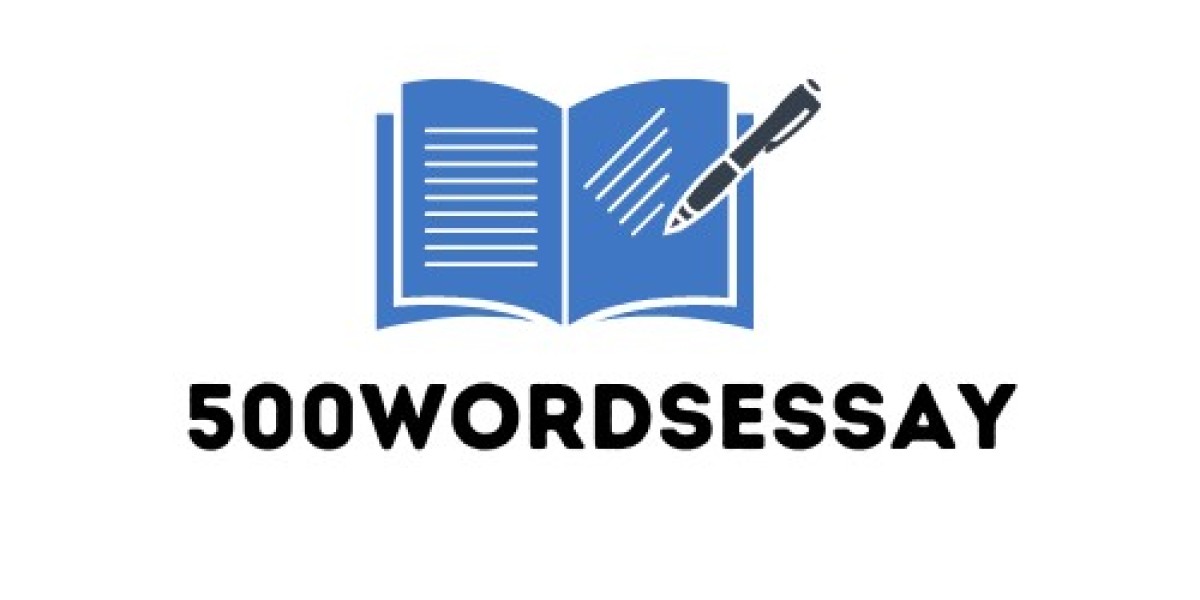Effective risk assessment and management play a crucial role in ensuring process safety in Malaysian industries. By identifying potential hazards and evaluating their potential impact, companies can implement proactive measures to mitigate risks and protect their employees, assets, and the environment.
The main aim of risk assessment and management is to systematically analyze the various risks associated with industrial processes and implement control measures to prevent accidents, incidents, and other undesirable outcomes.
To achieve this, companies must adhere to regulatory requirements and industry standards relevant to process safety consulting in Malaysia. These regulations provide guidelines and frameworks for implementing robust process safety management systems.
Through a comprehensive risk assessment and management process, organizations can identify potential failure points, assess the likelihood and potential consequences of process-related incidents, and develop effective control measures. This systematic approach ensures that risks are systematically identified, analyzed, and managed throughout the organization's operations.
Incorporating risk assessment and management into the day-to-day operations of Malaysian industries is crucial. By doing so, companies can continuously monitor and review their risk management processes, ensuring their effectiveness and making necessary changes as needed.
In the following sections, we will delve deeper into the regulatory requirements, essential elements, techniques, and best practices of risk assessment and management in process safety consulting for Malaysian industries.
Understanding the Regulatory Requirements
In process safety consulting for Malaysian industries, understanding and complying with the regulatory requirements is crucial for ensuring operational safety and regulatory compliance. Malaysian industries are subject to various regulations and standards that aim to mitigate the risks associated with their operations.
Compliance with Occupational Safety and Health Act (OSHA)
The Occupational Safety and Health Act (OSHA) of Malaysia sets out the legal requirements and obligations for ensuring workplace safety and health. It covers a wide range of industries and provides guidelines on risk assessment, hazard identification, and control measures. Process safety consultants must familiarize themselves with OSHA regulations applicable to their specific industry.
Regulations by the Department of Occupational Safety and Health (DOSH)
The Department of Occupational Safety and Health (DOSH) in Malaysia plays a significant role in regulating and promoting occupational safety and health. They enforce the Factories and Machinery Act, which outlines safety requirements for hazardous processes and machinery. Process safety consultants should have a thorough understanding of the specific regulations set by DOSH relevant to their area of expertise.
Standards by the Malaysian Industrial Standards Committee (ISC)
The Malaysian Industrial Standards Committee (ISC) develops and maintains standards that define the best practices for various industries. These standards provide guidance on risk assessment, process safety management, and control measures. Process safety consultants should stay updated with the latest ISC standards relevant to their field to ensure compliance and to implement effective risk assessment and management practices.
Guidelines from the Malaysian Oil and Gas Industry Task Force on Safety and Health (OGITFO)
For industries operating in the oil and gas sector, the Malaysian Oil and Gas Industry Task Force on Safety and Health (OGITFO) provides specific guidelines and best practices. These guidelines cover aspects such as process hazard analysis, emergency response planning, and competency requirements for personnel. Process safety consultants working in the oil and gas industry need to adhere to OGITFO guidelines to ensure process safety and risk management.
It is important for process safety consultants to stay abreast of any updates or amendments to these regulatory requirements and standards. By understanding and adhering to the regulatory framework, consultants can effectively guide Malaysian industries in implementing process safety measures that comply with the law and ensure the safety of their operations.
Key Elements of Effective Risk Assessment and Management
Effective risk assessment and management are crucial components of process safety consulting in Malaysian industries. By implementing best practices in risk assessment, organizations can identify potential hazards, evaluate the associated risks, and develop robust strategies to mitigate them. Here are the key elements and best practices that contribute to successful risk assessment and management in process safety consulting:
- Comprehensive Hazard Identification:
Thoroughly identify and evaluate potential hazards within the operational environment. This includes considering process fluids, equipment, human factors, and external factors that may pose risks.
- Risk Ranking and Assessment:
Prioritize identified hazards based on their potential consequences and likelihood of occurrence. Use qualitative or quantitative methodologies to assess and quantify risks. This enables organizations to focus on high-risk areas that require immediate attention.
- Proactive Risk Control Measures:
Implement proactive control measures to prevent process-related incidents. This may include engineering controls, administrative controls, and personal protective equipment. Emphasize preventative measures rather than relying solely on reactive controls.
- Regular Risk Monitoring and Review:
Establish mechanisms to monitor and review risk controls to ensure their effectiveness over time. Regularly assess the compliance of implemented control measures and make necessary adjustments based on changing conditions or new threats.
- Competent Personnel:
Engage competent personnel who possess the required knowledge, skills, and experience in process safety consulting. They should be capable of conducting in-depth risk assessments, recommending appropriate control measures, and facilitating comprehensive safety management practices.
- Integration into Organizational Operations:
Integrate risk assessment and management into the day-to-day operations of Malaysian industries. This involves incorporating risk assessment activities into work processes, procedures, training programs, and performance management systems.
- Documentation and Communication:
Maintain accurate documentation of risk assessment processes, findings, and control measures. Ensure effective communication of identified risks, control requirements, and mitigation strategies to relevant stakeholders within the organization.
- Continuous Improvement:
Promote a culture of continuous improvement by regularly reviewing risk assessment methodologies and incorporating lessons learned from incident investigations. Encourage feedback and involvement from all levels of the organization to drive constant enhancement in process safety practices.
By implementing these key elements and adhering to best practices, Malaysian industries can enhance their risk assessment and management processes. This leads to the development of effective strategies for ensuring process safety, regulatory compliance, and operational integrity.
Implementing a Systematic Approach for Risk Assessment
Implementing a systematic approach for risk assessment is crucial in process safety consulting to ensure the identification and mitigation of potential hazards. By following a well-defined methodology, organizations can effectively manage risks and prevent incidents that could jeopardize operational safety and regulatory compliance.
Here are some guidelines to help you implement a systematic approach for risk assessment in process safety consulting:
- Establish a Risk Assessment Team: Form a multidisciplinary team comprising individuals with diverse expertise and experience. This team should include process safety engineers, operations personnel, and other relevant stakeholders.
- Define the Scope and Boundaries: Clearly define the scope and boundaries of the risk assessment. Identify the specific processes, equipment, and systems that need to be evaluated. Consider the potential impact on personnel, environment, and the overall business operations.
- Identify Hazards: Conduct a thorough hazard identification study using techniques such as process hazard analysis (PHA) and qualitative risk analysis. This step involves systematically identifying potential hazards, such as chemical releases, fire, or explosion risks.
- Evaluate Risk: Assess the identified hazards in terms of their potential consequences and likelihood of occurrence. Use qualitative and quantitative assessment methods, such as fault tree analysis and Monte Carlo simulation, to evaluate risk levels. Consider the potential consequences of process-related incidents and determine the inherent risk associated with each hazard.
- Implement Control Measures: Develop and implement effective control measures to mitigate the identified risks. These measures can include engineering controls, administrative controls, and personal protective equipment. Ensure that the control measures are practical, feasible, and aligned with industry standards and best practices.
- Monitor and Review: Regularly monitor and review the effectiveness of the implemented control measures. Continuously assess the risk landscape and make necessary changes to the control measures as required. Constantly review the process safety management system to ensure its integrity and reliability.
By implementing a systematic approach for risk assessment, organizations can proactively identify and mitigate potential risks, thereby ensuring the safety of personnel, minimizing environmental impact, and maintaining regulatory compliance.
Next, let's explore the various techniques and tools used for hazard identification and assessment in process safety consulting.
Techniques for Hazard Identification and Assessment
Hazard identification and assessment are critical steps in process safety consulting. By thoroughly assessing potential hazards, organizations can proactively implement control measures to mitigate risks and ensure the safety of their operations. In Malaysian industries, various techniques and tools are utilized to identify and assess hazards. Here are some commonly used techniques:
- Process Hazard Analysis (PHA)
PHA is a systematic approach that examines processes, equipment, and operations to identify and evaluate potential hazards. It involves techniques such as:
- Hazard and Operability Study (HAZOP): A structured brainstorming session where a multidisciplinary team analyzes the system's design and identifies potential deviations that can lead to hazards.
- Failure Mode and Effects Analysis (FMEA): A method to identify potential failures, their causes, effects, and associated risks.
- Fault Tree Analysis (FTA): A graphical representation technique used to analyze the various events and circumstances that can lead to a specific undesired event.
- What-If Analysis
This technique involves asking "what if" questions to assess the consequences of potential hazards. It encourages brainstorming and stimulates creative thinking among the team. By considering various scenarios, potential risks can be identified and appropriate preventive measures can be implemented.
- Checklist-Based Approach
Using structured checklists tailored to specific industries, potential hazards can be systematically identified. These checklists typically include industry-specific regulations, standards, and best practices to ensure comprehensive hazard identification.
- Job Hazard Analysis (JHA)
JHA focuses on specific tasks or job roles within an organization. It involves breaking down tasks into steps and systematically identifying potential hazards associated with each step. By involving workers in the process, JHA ensures a thorough understanding of the hazards and helps in developing effective control measures.
- Incident Investigation and Lessons Learned
Analyzing past incidents and near-misses provides valuable insights into potential hazards. By investigating the root causes of incidents, organizations can identify underlying weaknesses and implement preventive measures.
By implementing these techniques, organizations in Malaysian industries can proactively identify and address potential hazards, thereby ensuring operational safety and regulatory compliance.
Developing and Implementing Control Measures
In process safety consulting, the development and implementation of effective control measures play a critical role in mitigating identified risks and ensuring operational safety in Malaysian industries. Control measures act as safeguards to prevent or minimize the potential consequences of process-related incidents. By systematically analyzing and understanding the hazards and potential risks involved, organizations can identify appropriate control measures to protect their workforce, the environment, and their operations.
Importance of Effective Control Measures
Effective control measures are essential to reducing the likelihood of accidents, injuries, and environmental damage. They serve as a line of defense, preventing the occurrence of catastrophic incidents and enhancing overall process safety performance. By implementing robust control measures, organizations can mitigate risks and maintain regulatory compliance while safeguarding their reputation and ensuring business continuity.
Identify and Assess Potential Risks
The first step in developing control measures is to conduct a comprehensive hazard identification and risk assessment study. This process involves identifying and evaluating potential hazards, their associated consequences, and the likelihood of occurrence. By understanding the risks specific to their operations, organizations can prioritize and focus their efforts on implementing control measures that effectively address the most critical risks.
Tailored Control Measures
Control measures should be tailored to the specific hazards and risks identified during the risk assessment process. They can include procedural controls, physical controls, administrative controls, and personal protective equipment (PPE).
- Procedural controls involve implementing standard operating procedures (SOPs), training employees on safe work practices, and establishing clear communication channels to ensure that all stakeholders are aware of the controls in place.
- Physical controls may include the installation of safety equipment, such as fire suppression systems, gas detection systems, pressure relief devices, and emergency shutdown systems. These measures are designed to prevent or mitigate the consequences of process-related incidents.
- Administrative controls focus on management systems and processes, including permit-to-work systems, regular safety inspections, incident reporting and investigation protocols, and audits. These controls contribute to a culture of safety and accountability within the organization.
- Personal protective equipment (PPE) should be provided to employees based on the nature of the hazards involved. This can include protective clothing, respiratory protection, gloves, glasses, or other equipment necessary to minimize the potential for exposure to hazards.
Ongoing Monitoring and Improvement
Control measures should be regularly monitored and reviewed to ensure their effectiveness. This can be done through routine inspections, audits, and the analysis of key performance indicators. Any identified deficiencies or opportunities for improvement should be addressed promptly to maintain a robust control framework.
Implementing and maintaining effective control measures is a vital aspect of process safety consulting in Malaysian industries. It requires a deep understanding of the hazards and risks specific to each organization and the commitment to ensuring a safe working environment for all stakeholders involved. By developing tailored control measures and regularly monitoring their effectiveness, organizations can minimize the potential impact of process-related incidents and promote a culture of safety and compliance.
Incident Investigation and Learning from Failures
Incident investigation plays a crucial role in the field of process safety consulting, particularly in Malaysian industries. By thoroughly investigating incidents and failures, organizations can gain valuable insights that lead to continuous improvement and enhanced process safety.
The Significance of Incident Investigation
Incident investigation serves as a proactive and preventive measure to identify the root causes of accidents, near misses, and other process-related incidents. It allows organizations to analyze the factors that contributed to the incident and learn from them to prevent similar occurrences in the future. The main aim of incident investigation is not to assign blame but to uncover the underlying factors and systemic issues that may have led to the incident.
Continuous Improvement through Lessons Learned
One of the key benefits of incident investigation is the opportunity to learn from failures and implement necessary changes to improve process safety. By identifying and understanding the factors that contributed to an incident, organizations can take corrective actions, update operating procedures, and strengthen their risk management practices. Continuous improvement based on lessons learned from incident investigation helps to create a safer working environment and prevent the recurrence of similar incidents.
Capturing Lessons Learned
A comprehensive incident investigation process should include collecting and analyzing relevant data, conducting interviews with personnel involved, and reviewing documentation. This information forms the basis for capturing valuable insights and lessons learned. These findings can then be shared across the organization, ensuring that everyone involved in process safety is aware of the identified risks and the actions taken to mitigate them.
Integrating Incident Investigation into Risk Management
Incident investigation serves as a feedback loop within the overall risk management process. The lessons learned from these investigations should be incorporated into risk assessments, hazard identification studies, and the development and implementation of control measures. By integrating incident investigation findings into these processes, organizations can proactively address risks and enhance their overall process safety management systems.
Ensuring Competency and Qualified Personnel
In the realm of process safety consulting, having competent and qualified personnel is paramount to effectively managing risks and ensuring operational safety in Malaysian industries. The expertise and experience of individuals involved in risk assessment and management play a crucial role in identifying potential hazards and implementing appropriate control measures. Here are some key points to consider when it comes to ensuring competency in personnel:
- Knowledge and Expertise
Having a solid foundation in risk assessment principles and techniques is essential for personnel engaged in process safety consulting. They should possess a deep understanding of industry standards, safety regulations, and best practices. Ongoing training and professional development programs should be in place to enhance their knowledge and keep them updated with the latest advancements in the field.
- Qualifications and Certifications
Personnel involved in risk assessment and management should have relevant qualifications and certifications to demonstrate their competence. Certifications such as Certified Process Safety Professional (CSP), Certified Safety Professional (CSP), and Certified Hazards Manager (CHM) validate their expertise and increase their credibility in the field.
- Interdisciplinary Collaboration
Process safety consulting often requires collaboration among professionals from various disciplines, including engineering, chemistry, and environmental science. By fostering interdisciplinary collaboration, organizations can leverage the diverse expertise of team members to conduct comprehensive risk assessments and develop robust risk management strategies.
- Continuous Improvement
Encouraging a culture of continuous improvement ensures that personnel continuously enhance their skills and expand their knowledge base. Regular feedback, performance evaluations, and knowledge-sharing sessions can contribute to the professional growth of individuals involved in risk assessment and management.
- Effective Communication and Leadership Skills
Having strong communication and leadership skills is crucial for personnel engaged in risk assessment and management. They should be able to effectively convey their findings, recommendations, and risk mitigation strategies to stakeholders across all levels of the organization. Effective leadership can inspire teams to work collaboratively and achieve the goals of successful risk assessment and management.
Having competent and qualified personnel involved in risk assessment and management is essential to achieving robust process safety management in Malaysian industries. Their expertise, knowledge, and continuous improvement efforts contribute to the effectiveness of risk management processes, ensuring the safety and well-being of employees and the surrounding environment.
Incorporating Risk Assessment in Organizational Operations
Incorporating effective risk assessment and management practices into the day-to-day operations of Malaysian industries is crucial for ensuring process safety and regulatory compliance. By adopting a systematic approach and implementing key strategies, organizations can identify and mitigate potential hazards, minimize risks, and create a safer working environment. Here are some guidelines to effectively incorporate risk assessment and management into organizational operations:
Establishing a Risk Assessment Framework
- Develop a clear and comprehensive risk assessment framework tailored to the specific needs and requirements of the organization.
- Define roles and responsibilities for individuals involved in the risk assessment process and ensure that they possess the necessary competency and qualifications.
- Implement a robust risk assessment procedure that includes identifying potential hazards, assessing their potential impacts, and prioritizing the risks based on their severity.
Regular Risk Assessments
- Conduct regular risk assessments to identify any new hazards, evaluate changes in existing hazards, and assess the effectiveness of existing control measures.
- Ensure that risk assessments are carried out by a qualified team using reliable and approved methods, techniques, and tools.
- Document and communicate the findings of the risk assessments to all relevant stakeholders, ensuring that they are aware of the identified risks and the necessary control measures.
Integration with Operational Processes
- Integrate risk assessment and management into all operational processes, including planning, design, implementation, and maintenance.
- Incorporate risk assessment considerations into decision-making processes, ensuring that potential risks are evaluated and addressed.
- Regularly review and update operating procedures, work instructions, and training materials to reflect the outcomes of risk assessments and the identified control measures.
Training and Awareness
- Provide comprehensive training programs to employees, contractors, and relevant stakeholders to enhance their understanding of risk assessment principles and techniques.
- Foster a culture of risk awareness and proactive risk management by encouraging reporting of potential hazards, incidents, and near misses.
- Continuously educate and update personnel on industry best practices, regulatory requirements, and the organization's risk management policies.
By incorporating risk assessment and management into organizational operations, Malaysian industries can proactively identify and address potential risks, ensuring the safety of their workforce, compliance with safety regulations, and the continuity of their operations.
Regular Auditing and Continuous Improvement
Regular auditing and continuous improvement play a crucial role in ensuring the effectiveness of risk assessment and management processes in process safety consulting for Malaysian industries. These practices not only help identify any gaps or deficiencies in the existing risk assessment procedures but also provide valuable insights into areas for improvement.
The Importance of Auditing
Auditing acts as a systematic evaluation of the risk assessment and management system, providing assurance that all necessary measures are in place to mitigate potential hazards. By conducting regular audits, organizations can identify and rectify any shortcomings in their processes, ensuring compliance with safety regulations and industry standards. Audits also help identify areas where additional control measures may be required, enhancing operational safety.
Continuous Improvement for Enhanced Safety
Continuous improvement is an essential aspect of risk management in process safety consulting. It involves analyzing past incidents, near misses, and trends to identify opportunities for enhancing safety measures. Through a constant review of risk assessment procedures and performance indicators, organizations can identify areas where process improvements can be made. This includes upgrading equipment, revising procedures, providing further training to employees, or implementing new technologies to enhance safety.
Implementing Lessons Learned
Auditing and continuous improvement go hand in hand, as the insights gained from audits are used to drive continuous improvement efforts. Lessons learned from incident investigations and near misses are incorporated into risk assessment practices to prevent similar incidents in the future. This proactive approach helps organizations stay ahead of potential risks and ensures a safer working environment for employees.
Regular audits and continuous improvement not only provide organizations with the assurance of effective risk assessment and management but also contribute to establishing a robust process safety management program. By implementing these practices, Malaysian industries can enhance their risk assessment capabilities, improve safety performance, and achieve and maintain regulatory compliance.
Conclusion
Implementing effective risk assessment and management strategies is crucial for ensuring process safety in Malaysian industries. By adhering to regulatory requirements and following best practices, organizations can mitigate potential hazards and minimize potential impacts.
Key elements of effective risk assessment and management include a systematic approach, incorporating hazard identification techniques, developing and implementing control measures, and conducting incident investigations for continuous improvement. Having competent and qualified personnel involved in the process is essential for accurate risk assessment and decision-making.
Organizational operations should incorporate risk assessment and management as a standard practice, ensuring that risk assessments are regularly reviewed, audited, and updated. This constant review and improvement process are necessary to ensure the effectiveness of risk assessment and management strategies.
By prioritizing process safety and implementing robust risk assessment and management processes, organizations can reduce the likelihood of incidents and maintain safety regulation compliance. This not only protects employees and the surrounding environment but also safeguards the organization's reputation and financial stability.



